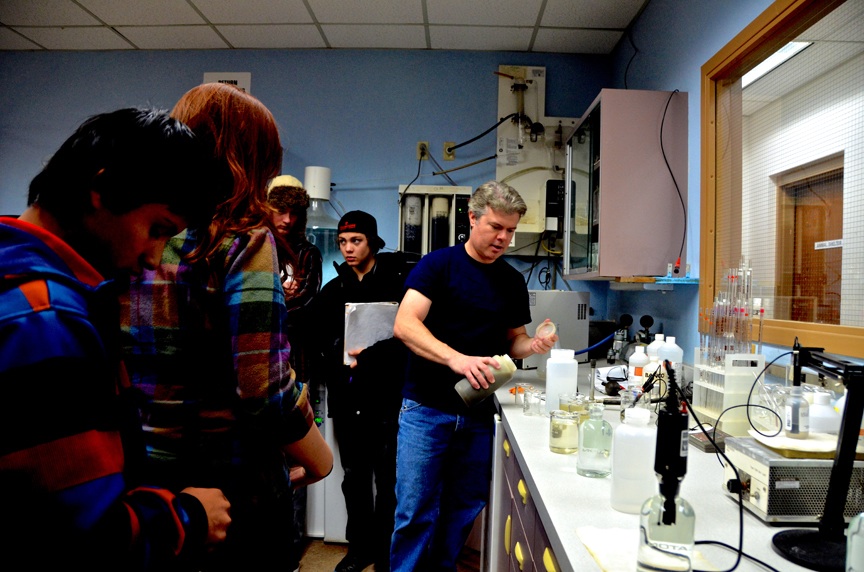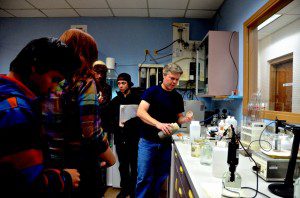
26 Mar TELLURIDE MOUNTAIN SCHOOL INVESTIGATES LOCAL WATERSHED, PART TWO
Editor’s note: For two weeks, Telluride Mountain School High School students put aside textbooks and turned their attention to water. With the help of local experts on water and media, they researched, wrote, and presented everything there is to know about Telluride water– where it comes from, how it’s cleaned, and what the fate of future snowpack is. This second entry, by freshman, Camilla Gardner, is part two of a five-part series on Telluride water….
Reaching the Limit: The Reality of Water Issues Across the Globe
by Camilla Gardner
An American taking a five-minute shower uses more water than the average person living in a slum in a developing country uses in an entire day. On a daily basis, women spend 200 million hours walking to a water source and collecting water for their families.
For you and me, water is abundant. Living in a developed nation, we take water for granted. It is rare that people have to work hard or travel far in order to gain access to clean, reliable drinking water.
So how can this be? How is it the case that people in under-developed countries can spend their days simply gathering water for survival, while across the world, other people can go swimming at a water park and leave the tap running for hours on end without a problem?
On earth there are approximately 326 million trillion gallons of water. That may sound like a huge amount. However, of that water, 98 percent is found in the oceans as salt water. That means only 2 percent of the world’s water is fresh drinkable water. Of that 2 percent, three-fourths of the fresh water is found in the polar ice caps, making if very difficult to access or obtain any drinkable water from that source—the same way that our water in Telluride is trapped in the snowpack all winter until it melts in the spring. That final fourth, which is the equivalent of 0.04 percent of all the water on earth, can be found in underground aquifers, natural lakes and rivers, or in the air. It is this final 0.04 percent of all the water on earth that the 7 billion humans worldwide depend on to fulfill their daily water needs. Today, 780 million people—about one in nine—lack access to clean water. Unsanitary water conditions can lead to water-borne illness. Around the world, a child dies every 20 seconds from a water-related disease, and water-related diseases also kill more than 3 million people each year.
If you were living in Africa or Asia, you would have to walk on average six kilometers to get safe, clean drinking water. In most places, it is women and children who are in charge of collecting the water. This precious time gathering water takes away from time that could be spent working at an income-generating job, caring for family members, or attending school.
Next time you turn on the tap, or take a long, hot shower, be thankful that you did not have to walk many miles to access that water.
Check out this podcast with Sylvan Bald to learn more about what Telluride Mountain School discovered at the waste water treatment plant.
See all the photos and stories from the Telluride Mountain School water project here.



Sorry, the comment form is closed at this time.